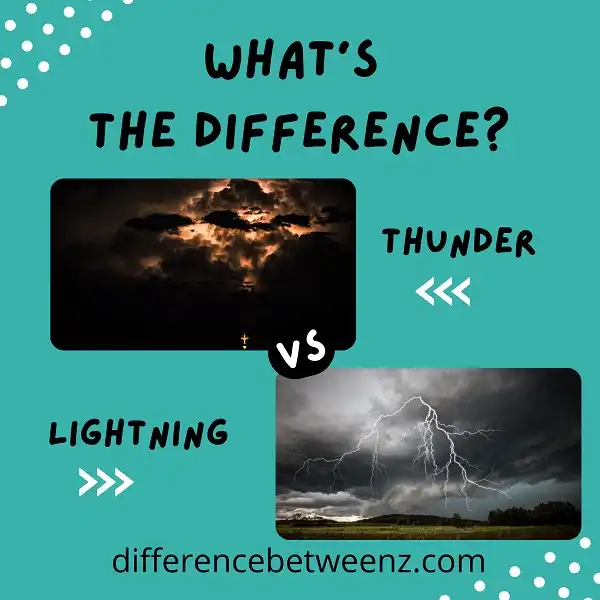What are the differences between thunder and lightning? Many people ask this question, but there is no clear answer. The two phenomena are related, but they are not the same. In this blog post, we will explore the differences between thunder and lightning and discuss some of the science behind these natural wonders. We will also take a look at some myths and misconceptions about these two weather events. Stay tuned!
What is Thunder?
Thunder is the sound that results from the sudden release of energy in the atmosphere. This release can be caused by lightning, which produces a shock wave of air that travels at the speed of sound. Thunder can also be caused by volcanic eruptions, meteorites, and sonic booms. The sound of thunder is created when the shock wave vibrates the air molecules in its path. These vibrations produce pressure waves that travel through the air and are eventually heard by our ears. Thunder can be very loud, and its intensity often depends on the distance between the source of the sound and the observer. For example, thunder can typically be heard from about 30 miles away if there are no obstructions in between. However, Thunder can also be reduced in strength by passing through buildings or other objects. Additionally, the temperature of the atmosphere can also affect how well thunder travels. In general, colder air is better at conducting sound waves than warmer air. This is why thunder is often heard more clearly in winter than in summer.
What is Lightning?
Lightning is a naturally occurring electromagnetic discharge during which two electrically charged regions in the atmosphere temporarily equalize themselves. For Lightning to occur, there must be a cumulonimbus cloud (thunderstorm cloud) from which Lightning can originate. Lightning typically occurs within the cloud itself or between the cloud and the ground. When Lightning occurs between cloud and ground, it is referred to as Cloud-to-Ground (CG) Lightning. CG Lightning can be particularly dangerous because it represents a direct path for Lightning to reach ground level.
Difference between Thunder and Lightning
Thunder is simply the sound produced by lightning. While we see lightning first, thunder happens afterward.
- Thunder is caused by the shock wave that forms as super-heated air expands outward at the speed of sound. We hear thunder when the shock wave reaches our ears.
- The delay between seeing the flash of lightning and hearing the rumble of thunder allows us to estimate how far away a storm is.
- Lightning happens when there is a sudden release of electricity in the atmosphere. This can happen between clouds, within clouds, or between a cloud and the ground.
- Most thunderstorms are caused by warm air rising until it reaches an area of lower pressure. As the air rises, it cools and water vapor condenses to form clouds.
- The rising air eventually becomes too buoyant and begins to swirl, creating an updraft. This updraft can become strong enough to lift water droplets high into the atmosphere where they freeze into ice crystals.
- If enough ice crystals come together, they create a large liquid droplet that falls to the ground as hail. When these falling hailstones collide with air particles, they create an electrical charge. If this charge accumulates to a high enough level, it will be discharged as a flash of lightning.
Conclusion
Thunder and lightning are often confused for one another, but there is a big difference between the two. Thunder is the sound that is made by lightning, while lightning is the bright light that is seen during a storm. Knowing the difference can help you stay safe during a storm. Have you ever been in a thunderstorm and heard a loud rumble? That’s thunder! Lightning is what we see as bright flashes of light during a storm. It’s important to know the difference between thunder and lightning so that you can stay safe during a storm.


